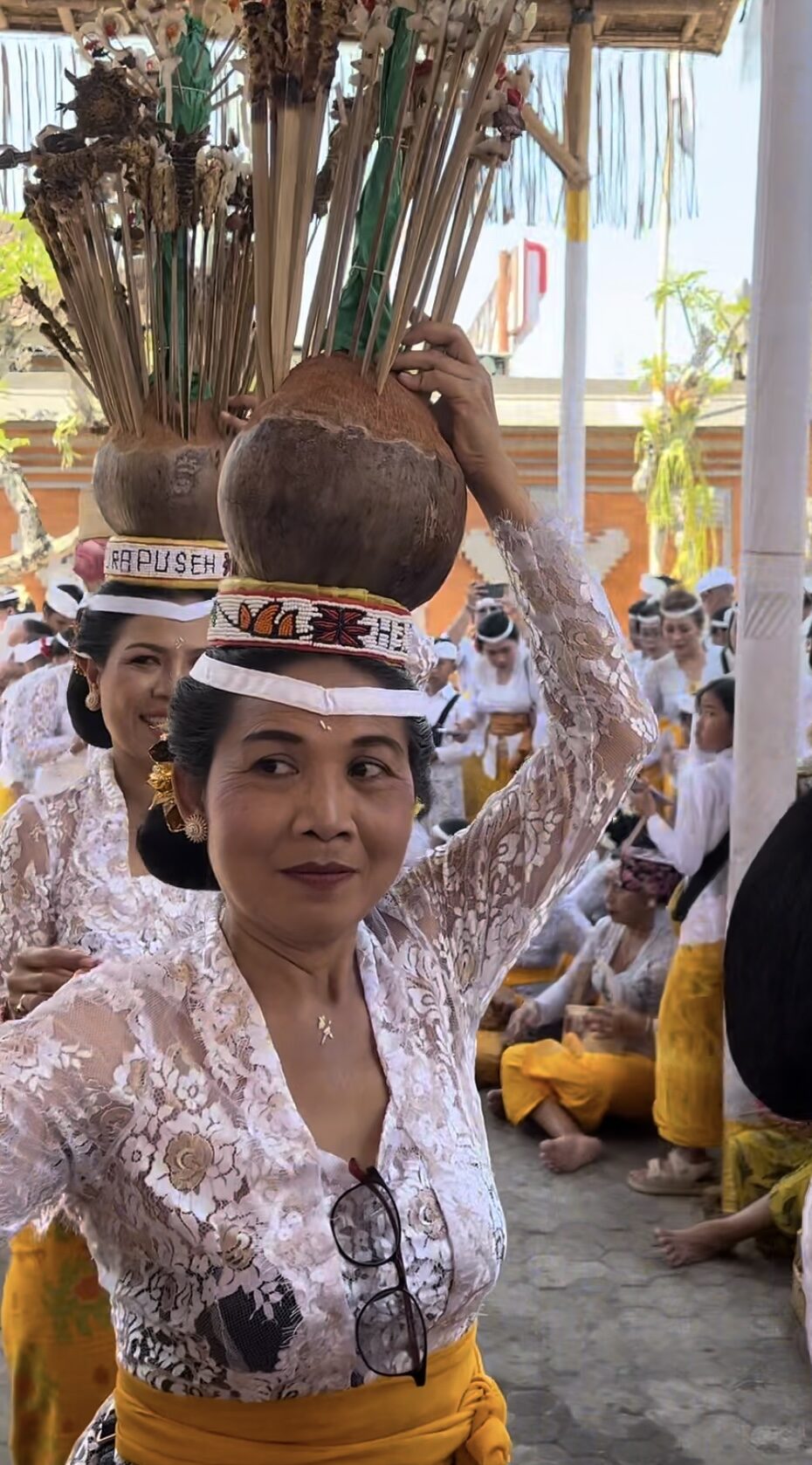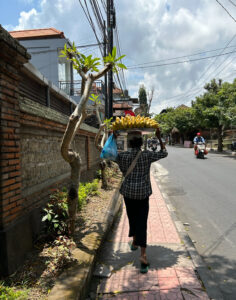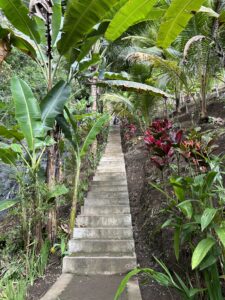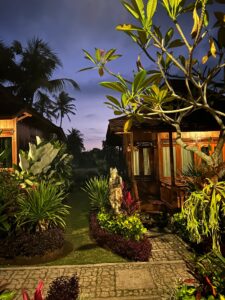For reasons best known to myself, I finally picked a blue sarong* with gold-coloured elephants. The price of my indecisiveness was roughly two and a half hours in a noisy and crowded local market searching for that “perfect one.” And no, I learned nothing from this. Well, I did later learn that my proudly negotiated price was still ten times higher than the usual rate, and that the sarong might play a magic trick and make elephants disappear in the washing machine, should I decide to use one.
Still, excited about my purchase, which would allow me to enter a local temple, I wrapped it around my waist and tiptoed like an injured penguin to the patio of my accommodation. It was close to 7 am — early morning for me and almost midday for the Balinese family I stayed with. As soon as I appeared on the staircase, grandma, who was sitting in the corner of the open kitchen chopping a pineapple on a stump, waved me over. “She want fix sarong” — the daughter explained, laughing. You may not think much of a 90-year-old woman, but she did not lack strength. She redid my sarong and secured the sash so tightly that I wouldn’t even think about having food while wearing it. On a positive note, her way of wrapping allowed some leg space so that I could step with confidence.






*in the context of Bali, sarong is a traditional piece of clothing that is worn for daily ceremonies and temple visits. It’s a large piece of fabric that is wrapped around the waist and secured in various ways depending on the occasion and the wearer’s preference. Sarongs are an essential part of the Balinese dress code when entering sacred spaces like temples and everyone (including visitors, tourists) must follow it when visiting such places.
To be continued…




